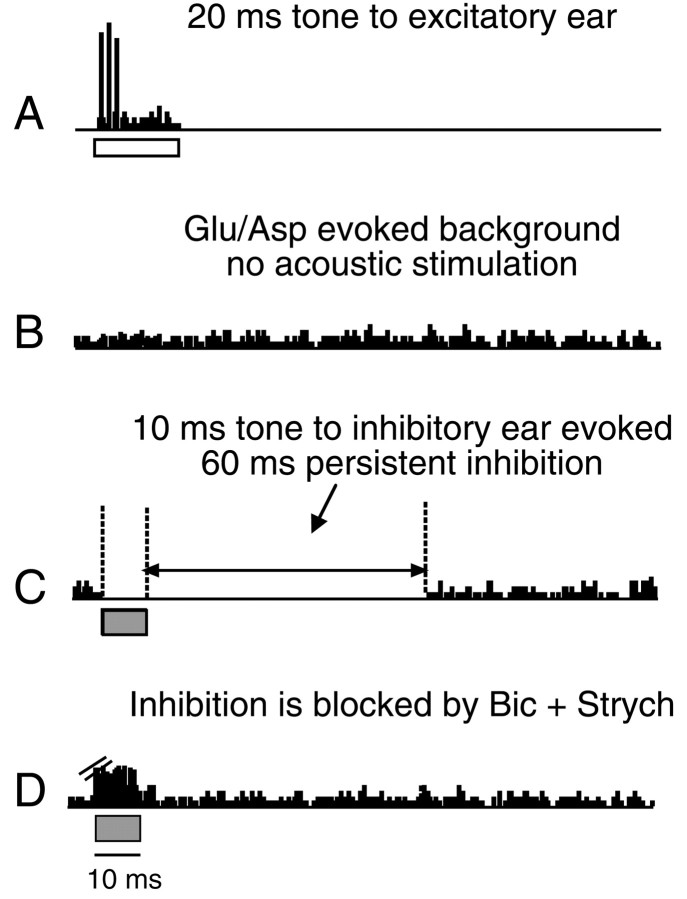Fig. 3.
Excitation and inhibition in a DNLL neuron.A, Sustained response evoked by a BF tone burst (20 dB SPL; horizontal bar) presented to the ear contralateral to the DNLL is shown. B, Background activity evoked by iontophoretic application of glutamic and aspartic acids (Glu/Asp) is shown. C, A 10 msec BF tone burst (40 dB SPL) at the ear ipsilateral to the DNLL (inhibitory ear) inhibits Glu/Asp-evoked background activity. The inhibition, seen as thegap in the background activity, had a total duration of 70 msec. Thus, the inhibition persisted for 60 msec beyond the duration of the 10 msec tone burst that evoked the inhibition. D, Ipsilaterally evoked inhibition was abolished when a cocktail of bicuculline and strychnine was applied. The blockage of inhibition combined with the enhanced excitability caused by the Glu/Asp unmasked a subthreshold excitation. The excitation was not evoked in the absence of Glu/Asp, even when inhibition was blocked by bicuculline and strychnine. Not all DNLL cells displayed such a subthreshold excitation under these conditions. Ejection currents were as follows: Glu/Asp, 15 nA, and bicuculline and strychnine cocktail, 30 nA. Time bars under responses have been shifted to illustrate the relationship between the stimulus and response durations. BF was 35.2 kHz. Bic, Bicuculline; Strych, strychnine.

